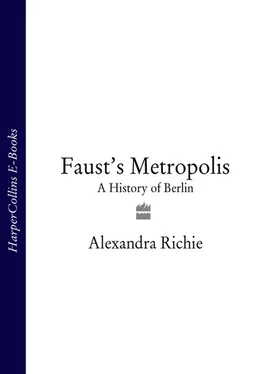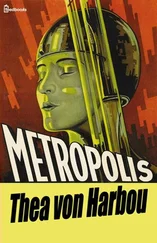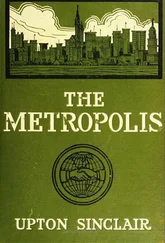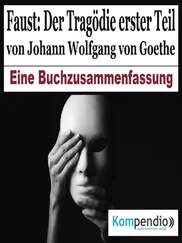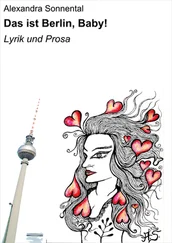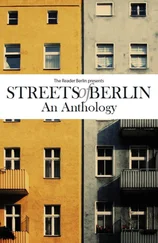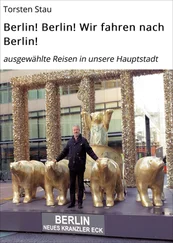The creation of a memorial in Berlin is contentious partly because of where the actual killing took place. The murder of Europe’s Jews was directed from Berlin, but there were no killing centres in Germany itself. Unlike concentration camps such as Bergen-Belsen or Dachau or Sachsenhausen, the extermination camps were located some distance away. Kulmhof (Chelmno), where 360,000 people were killed and three people survived, was located in western Poland. Belzec, where 600,000 people died and two survived, Sobibór, where 250,000 people died and sixty-four survived, and Treblinka, where over 870,000 people died and fewer than seventy survived, were all located in eastern Poland. 97Around 1 million Jews and 270,000 non-Jewish Poles were killed in Auschwitz, in southern Poland. The thousands of Jews who survived Auschwitz did so only because it had a dual function both as an extermination camp (Birkenau) and a concentration/slave labour camp. This relatively ‘high’ survival rate came about because some Jews were selected to be worked to death rather than gassed upon arrival. This is one of the reasons why Auschwitz has become something of a symbol for the Holocaust – there were simply no witnesses left to tell of what had happened elsewhere. 98If one counts only the number of Jews murdered in the first four extermination camps listed, and excludes those killed in Auschwitz, it would be tantamount to murdering over half Berlin’s 1939 population – more than 2 million people. The survivors could easily fit into an average Berlin apartment.
Because so few non-Jewish Germans were interned in the extermination camps, and because so few people survived, the mass murder of Jews has entered German memory as something of a figurative rather than a literal experience. As James Young has put it,
had it not been for the massive, last-ditch evacuations of Jewish prisoners from death camps in Poland … the mass murder might have remained a foreign phenomenon altogether. German experience of the prisoners’ plight in the camps was limited largely to either helping Jewish neighbours or watching quietly as they disappeared, guarding the camps or being forced by Allied soldiers to march through them after liberation. As a result, what we call Holocaust memorials in Germany tend to be highly stylized when remembering the Jews. 99
Nowhere is this better demonstrated than in West Berlin’s existing memorial to the camps.
As one approaches the pretty Wittenberg Platz U-Bahn station one sees a sign which looks rather like a bus timetable. There is another nearby. As one comes closer one sees that it is not a timetable but rather a list of twelve concentration and extermination camps headed by the words PLACES OF TERROR THAT WE SHOULD NEVER FORGET. The signs were erected in 1967 and they are astounding in their inadequacy. 100They show why so many felt Berlin needed a central monument to the Holocaust, however controversial it might be. On another level, independent groups have recently set up a number of other more convincing memorials on historic sites, such as the projection of the names of deported Jews on to a blank wall near the building in which they once lived in Steglitz, or the imaginative description of the history of the Sonnenallee slave labour camp located next to an ordinary playing field in Neukölln. 101There is a new interest in other sites as well; the siding at Grunewald train station, one of the points from which 36,000 Berlin Jews were deported, is to be preserved; there is to be a plaque there and another at the Putlitzstrasse station. There is now a sculpture and plaque at the Tiergarten 4 site next to the Philharmonie, where the euthanasia programme was devised. Another place in Berlin dedicated to remembrance is Daniel Libeskind’s Jewish Museum, an annex to the Berlin Museum. The structure has been built in the form of a distressed Star of David with a space in the centre, creating a void into which one can look, but cannot enter. The museum will show the long history of Berlin’s Jewish citizens; how they were crucial to its prosperity, its culture and its identity. It will also show what the loss of so many Berliners – Jewish Berliners – meant to a city in which they had played such an important role. In 1992 the villa at Am Grossen Wannsee 56–58, the site of the Wannsee Conference of 20 January 1942, was finally turned into a Holocaust Memorial Centre, and signs were put up both at the Jewish retirement home in Grosse Hamburger Strasse and at the site of the Levetzowstrasse synagogue. 102It is important that Berlin should preserve such places for the future and continue to fight against people like those who spray-painted the headstones in the Weissensee Jewish cemetery or who on 25 August 1992 fire-bombed Sachsenhausen – a camp just outside Berlin in which 100,000 people died. 103
The clock can never be turned back, and the lives taken or ruined because of the orders issued from Berlin cannot now be saved. But something good can come of this history. More than anywhere else in the world Berlin can contribute to an understanding of the Holocaust and of the other crimes committed by Nazi Germany by exposing the insidious nature of evil. Visitors should be encouraged to understand how it crept into the city slowly, into hearts and minds, into cafés and Hinterhöfe and side streets and entire districts. So many of those who worked in Berlin were not for the most part inhuman monsters but ordinary people who made the wrong choices. Berliners should not try to draw a Schlussstrich , a line under the past, or repress it, or turn it into a mere tool of contemporary party politics, or counter it with proof of the terrible crimes committed by other dictators. In the end, only the victims can forgive the perpetrators; all Berliners can do is to try to be worthy of forgiveness both by remembering the past, and by trying to build the kind of society in which such things cannot happen again. Those who claim that the past does not matter, or that such things will never be repeated need only look across the old death strip towards the building which contains the Stasi files in the ex-GDR and remind themselves of the thousands of people who so very recently once again put personal gain above human decency. Nazi crimes did not happen just because a handful of criminals deemed they should; they were also possible because of the tiny steps taken by millions of people who helped to maintain these systems of repression and terror either by working within them, or by informing on people, or by simply ignoring what was happening and refusing to take responsibility for it. Berliners should face up to the curse of Mephisto which permeates their city’s past.
The politicized debates over Germany’s history have intensified with reunification. Conservative historians continue to accuse their left-wing colleagues of seeing the past only in relation to the Holocaust while those on the left accuse conservatives of trying to relativize history: to many assume that one cannot do both – that one cannot appreciate Berlin’s extraordinary history while at the same time working to understand its role as the capital of the Third Reich.
Berlin is an incredible city. It has a long and varied history and its people have created marvels in the fields of art and culture, technology and research, commerce and industry. Its past is filled with moments of beauty, of tolerance, of astounding creativity, of great suffering and great poignancy. Berlin was the centre of the Third Reich, but it has also been many other things. Rather than dismissing their entire past because of what happened between 1933 and 1945 Berliners should be encouraged both to learn about what went so terribly wrong, and to trace those things which were good or noble or creative in their heritage, whether in the eighteenth-century traditions of religious tolerance or in the reforms introduced by vom Stein; whether in the spirit exhibited during the Berlin blockade when the city became the focal point of the Cold War, or in the lessons of the tragic 1953 Uprising or in the courage shown when the Wall was built in 1961. For the first time in decades all Berliners are in a position to choose which values they wish to emulate. A clear view of history can offer them the insights they need to make this choice. It can also warn them of the likely consequences if they refuse to take responsibility for their actions. Berliners cannot afford to fall back on stereotypes or sentimental myths and legends about their past. Rather than alluding to kitschy images of the Golden Twenties they could perhaps ask themselves why Marlene Dietrich’s grave is still regularly defaced; rather than claiming that Berlin was traditionally a city of immigrants they might protect its minorities from increasingly frequent attacks; rather than trying to remove the Soviet war memorial at Treptow they might ask why so little is known about the war-time treatment of Russian prisoners, 3 million of whom were killed by the Nazis. 104Rather than merely commemorating the July 1944 plotters now featured in hundreds of books, museums, memorials and street signs they might question why these honourable men and women are still legally considered ‘traitors to Germany’ and have not yet been pardoned by a ‘grateful nation’. 105Rather than complain about how much is written about the concentration camps they might ask how it was that in 1991 Ravensbrück, only 35 miles from Berlin, barely escaped being transformed into a shopping mall and car park. 106
Читать дальше
